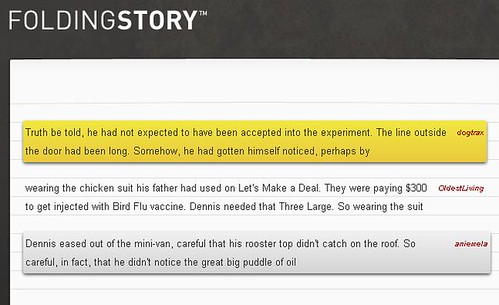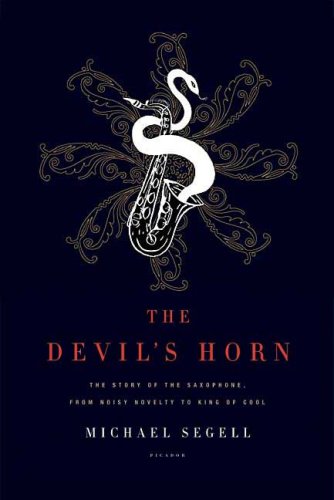 The other day, I came across a link to a collaborative story writing site called The Folding Story. It’s a clever online variation of the activity in which one person starts a story, folding the paper just so the next person only sees one or two lines of what has been written. The second person continues the story, folds the paper and passes it on to the third person. Repeat. In essence, the writer never sees the entire story, so they are inspired by only a small part. The result is a very odd, and usually funny, story that goes off in all sorts of directions.
The other day, I came across a link to a collaborative story writing site called The Folding Story. It’s a clever online variation of the activity in which one person starts a story, folding the paper just so the next person only sees one or two lines of what has been written. The second person continues the story, folds the paper and passes it on to the third person. Repeat. In essence, the writer never sees the entire story, so they are inspired by only a small part. The result is a very odd, and usually funny, story that goes off in all sorts of directions.
The Folding Story website is like that, too, only now the audience is potentially vast and even odder than the people in the room with you. Trust me. Thanks to a bunch of friends on Twitter, we’ve been experimenting a bit with the site. I have started three different stories, which are still open for collaboration. Not one of them even remotely has gone in a planned trajectory.
This is one of those sites that has value for me as a writer, but I would not bring my students there, given the language and content of the writing added by the various users. Stories can instantly veer into inappropriate directions, and even the creator of the story has no way to edit or change what someone else has added to your story. You write something and hope for the best. I can live with that, but not as a teacher. (The Folding Story folks say that they are developing private rooms for stories that might have applications for the classroom. We’ll see.)
The basics of the site are:
- Each story needs to have ten entries before it is “done.”
- Each user can only add one entry per story (so once you start a story, you can’t add to it anymore).
- Each entry has a limited character count (180 characters) and a time limit (four minutes).
- When a story is done, the entire fold then gets published on the site, where folks “vote” on individual strands of the story. This apparently gives the story a total score, which then ranks the story for its prominence in publishing at the site (I don’t have a good handle on this).
Care to join in? Here are links to my three stories, which still need a few folds to be complete. I am including the first line of the story I created, which you won’t see because you will be working beneath the fold.
- He’d switched careers, moving from programming to the classroom.
- If ever there was a time to use his cell phone, this was it.
- Truth be told, he had not expected to have been accepted into the experiment.
Peace (in the writing),
Kevin





 Technology with intention
Technology with intention


